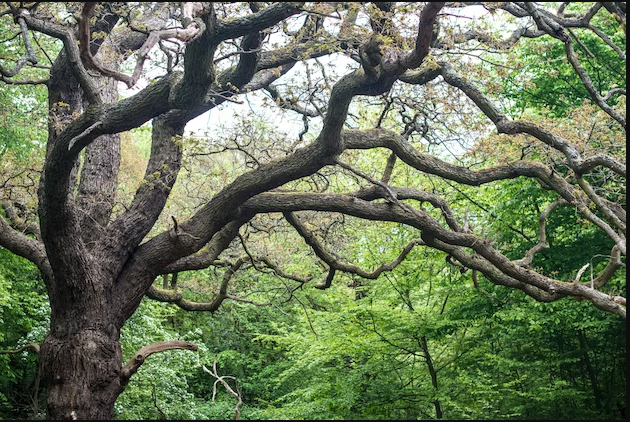The Value of Maintaining Living Tree Limbs: An Overview of Tree Health and Upkeep
In the lush tapestry of nature, trees stand as majestic guardians, providing us with clean air, shade, and a sense of tranquility. However, their well-being often goes unnoticed until a problem arises. This guide delves into the crucial role of preserving live tree limbs, offering insights into tree health and maintenance practices that can prolong the life and beauty of these vital organisms.

Understanding Tree Anatomy
Trees are complex living organisms with intricate structures designed for growth, support, and nourishment. One of their key components is the limb system, consisting of branches, twigs, and leaves. Live tree limbs actively contribute to the tree’s vitality by photosynthesizing sunlight into energy, absorbing carbon dioxide, and releasing oxygen.
The Significance of Live Tree Limbs
Live tree limbs play several essential roles in the ecosystem and urban landscapes:
Photosynthesis and Oxygen Production: Limbs with healthy foliage perform photosynthesis, converting sunlight and carbon dioxide into glucose and oxygen. This process is vital for sustaining life on Earth.
Structural Support: Live limbs provide structural integrity to trees, helping them withstand environmental factors such as wind, rain, and snow.
Wildlife Habitat: Foliage-rich limbs offer habitats for various wildlife species, including birds, squirrels, and insects. They contribute to biodiversity and ecological balance.
Aesthetic Appeal: Trees with vibrant, green limbs enhance the visual appeal of landscapes, parks, and neighborhoods, contributing to mental well-being and quality of life.
Common Threats to Live Tree Limbs
Despite their resilience, live tree limbs are susceptible to various threats that can compromise their health:
Pests and Diseases: Insects, fungi, and bacteria can infest tree limbs, causing leaf discoloration, defoliation, and structural decay.
Environmental Stress: Factors such as drought, extreme temperatures, pollution, and soil compaction can stress tree limbs, leading to reduced vigor and growth.
Mechanical Damage: Improper pruning, accidental impacts, and construction activities can injure tree limbs, creating entry points for pathogens and weakening their structure.
Root Issues: Poor soil conditions, root compaction, and root rot can indirectly affect the health of tree limbs by disrupting nutrient uptake and water absorption.
Preserving Live Tree Limbs: Best Practices
To ensure the longevity and vitality of live tree limbs, consider the following best practices:
Regular Inspections: Conduct annual inspections of tree limbs to assess their health, identify potential issues, and take preventive measures.
Pruning Techniques: Use proper pruning techniques, such as selective thinning, crown cleaning, and branch collar cuts, to remove dead, diseased, or crossing limbs while preserving healthy ones.
Pest and Disease Management: Implement integrated pest management (IPM) strategies to control pests and diseases effectively, including cultural practices, biological controls, and targeted treatments.
Environmental Care: Maintain optimal soil conditions, provide adequate water and nutrients, and minimize environmental stressors to support the overall health of tree limbs.
Protection Measures: Install physical barriers, mulch rings, and signage to protect tree limbs from mechanical damage during construction, landscaping, and recreational activities.
Benefits of Preserving Live Tree Limbs
By prioritizing the preservation of live tree limbs, individuals, communities, and organizations can reap numerous benefits:
Environmental Sustainability: Healthy tree limbs contribute to cleaner air, reduced carbon footprint, and enhanced biodiversity, supporting a sustainable environment.
Economic Value: Trees with well-maintained limbs increase property values, reduce energy costs through shade and windbreaks, and attract customers to commercial areas.
Health and Well-being: Green spaces with thriving trees and limbs promote physical activity, reduce stress, improve air quality, and create scenic landscapes for relaxation and recreation.
Urban Resilience: Trees with preserved limbs enhance urban resilience by mitigating heat island effects, reducing stormwater runoff, and providing habitat connectivity for wildlife.
Community Pride: Preserving live tree limbs fosters a sense of community pride, environmental stewardship, and cultural heritage, creating shared spaces that enrich people’s lives.
In conclusion, the importance of preserving live tree limbs cannot be overstated. By understanding their role, addressing potential threats, and implementing proactive measures, we can safeguard the health, beauty, and benefits of trees for generations to come. Let’s embrace the essence of tree care and nurture our green companions for a healthier and more vibrant world.
FAQ
Why are branches important for trees?
Branches are essential because they help trees produce food, breathe, and maintain balance. They function much like tree limbs, reaching out for what the tree needs to survive.
What happens if you cut too many branches?
Over-pruning can weaken a tree, making it prone to diseases and stunting its growth. It’s like removing the tree’s natural tools for staying healthy and strong.
How do you know when to trim a tree?
The best approach is to consult a tree care expert, like an arborist. They can provide tailored advice on what’s best for your trees health.
